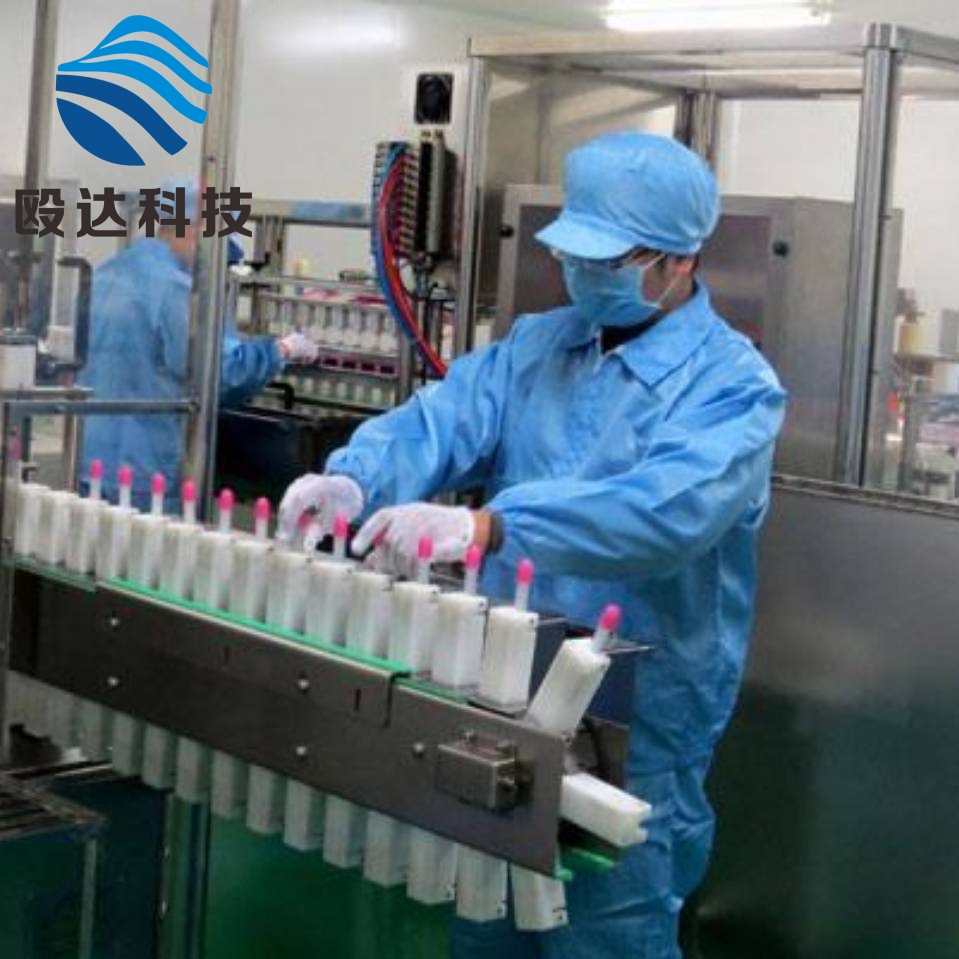-
Categories
-
Pharmaceutical Intermediates
-
Active Pharmaceutical Ingredients
-
Food Additives
- Industrial Coatings
- Agrochemicals
- Dyes and Pigments
- Surfactant
- Flavors and Fragrances
- Chemical Reagents
- Catalyst and Auxiliary
- Natural Products
- Inorganic Chemistry
-
Organic Chemistry
-
Biochemical Engineering
- Analytical Chemistry
- Cosmetic Ingredient
-
Pharmaceutical Intermediates
Promotion
ECHEMI Mall
Wholesale
Weekly Price
Exhibition
News
-
Trade Service
Polymyxins are mainly used for bloodstream infections, urinary tract infections, lower respiratory tract infections, central nervous system infections and skin and soft tissue infections caused by carbapenem-resistant gram-negative bacteria (CRO).
The "China Multidisciplinary Expert Consensus on the Rational Application of Polymyxin Antibiotics" is presented in the form of question and answer, divided into 11 parts, 37 questions, and 10 recommendations.
List of recommendations [Recommendation 1] Polymyxin drugs include: Polymyxin B Sulfate for Injection, Polymyxin E Sodium Methanesulfonate for Injection (Colistin Sodium Methanesulfonate for Injection) and Injection Polymyxin sulfate E (colistin sulfate for injection).
The usual dose conversion method: Polymyxin B sulfate, 1 mg = 10,000 U; Polymyxin E sodium methanesulfonate (CMS), 1 million U ≈ 80 mg CMS ≈ 33 mg CBA; Polymyxin sulfate E, 1 mg ≈ 22,700 U.
The dosages of colistin B sulfate, colistin E sodium methanesulfonate, and colistin sulfate E should be applied in accordance with their respective drug inserts or recommendations in this guide.
[Recommendation 2] The international general standard micro broth dilution method (BMD) for the sensitivity test of polymyxin drugs, according to the clinical practice in my country, the colistin broth elution (CBDE) , Polymyxin E (colistin) agar test (CAT) and some current commercial broth dilution methods are also acceptable.
The results are for reference only; however, the drug gradient diffusion method is not recommended.
The clinical breakpoints of colistin drug sensitivity tests recommended by this consensus are: Sensitivity (S): ≤ 2 mg/L; Resistance (R): ≥ 4 mg/L.
The susceptibility results of Polymyxin E and Polymyxin B can be substituted for each other, and testing one drug can predict the sensitivity of another drug.
[Recommendation 3] The resistance rate of clinically isolated gram-negative strains to colistin drugs in China is still very low.
Plasmid-mediated mcr resistance is one of its important resistance mechanisms; it is recommended to use colistin Drug-based combination therapy can reduce the risk of heterogeneous drug resistance and increase the success rate of treatment.
[Recommendation 4] Both Polymyxin B Sulfate and Polymyxin E Sulfate are pharmacologically active forms, which directly exert their medicinal effects after entering the body, and are mainly eliminated through non-renal pathways.
Polymyxin B can reach the peak blood concentration after the intravenous infusion, which is more suitable for the treatment of bloodstream infections.
Polymyxin E sodium methanesulfonate is a prodrug, which is inactive by itself.
It needs to be transformed into polymyxin E in the body before it can exert its efficacy.
60%~70% of colistin sodium methanesulfonate passes through the kidney It is excreted and converted into polymyxin E in the urine, which is suitable for the treatment of urinary tract infections.
Limited by the maximum tolerable dose of polymyxin drugs, it is difficult for patients with pneumonia to achieve the required lung tissue drug concentration when intravenously administered.
It is recommended to simultaneously assist polymyxin drug inhalation therapy for severe pneumonia.
[Recommendation 5] Polymyxins are recommended for the treatment of severely drug-resistant gram-negative bacteria (carbapenem-resistant Enterobacter bacteria [CRE], Acinetobacter baumannii [CRAB] and pseudomonas aeruginosa Severe infections caused by spore bacteria [CRPA]) should be given a loading dose.
Commonly recommended doses: Polymyxin B sulfate, loading dose 2.
0~2.
5 mg/kg (equivalent to 20,000-25,000 U/kg), maintenance dose 1.
25-1.
50 mg/kg (equivalent to 12,500-15,000 U/kg) kg), 1 time/12 h; polymyxin E sodium methanesulfonate, a loading dose of 300 mg CBA (about 9 million U), and the first maintenance dose of 150-180 mg (about 4.
5 million to 5.
45 million U), 1 time/12 h; Polymyxin E sulfate, 1 million to 1.
5 million U/d, 2 to 3 times.
It is not recommended to adjust the daily dose of colistin sulfate in patients with renal dysfunction and CRRT; colistin sodium methanesulfonate is mainly metabolized by the kidneys, and patients with renal dysfunction are recommended to adjust the daily dose according to the creatinine clearance rate.
In the case of acute liver dysfunction, polymyxin-like drugs generally do not need to adjust the dose, but close monitoring is required.
[Recommendation 6] The main adverse reaction of colistin drugs is mainly nephrotoxicity.
When using colistin drugs, try not to exceed the recommended dose in this consensus.
Avoid concomitant use of other nephrotoxic drugs.
Treatment is recommended.
Drug monitoring (TDM).
If the patient has acute kidney injury, polymyxin B sulfate can be preferred; if the diagnosis of infection is uncertain or there are other lower nephrotoxic drugs to choose from, it is recommended that patients with acute kidney injury do not use polymyxin drugs.
The incidence of neurotoxicity is very low, but it should be avoided in combination with non-depolarizing neuromuscular blockers or aminoglycoside drugs.
Skin pigmentation does not affect the anti-infective treatment of polymyxin drugs.
[Recommendation 7] Polymyxins have a narrow therapeutic window and almost overlap with the concentration of nephrotoxicity.
TDM is recommended for application.
Target therapeutic drug concentration: When the MIC of colistin drugs against sensitive bacteria is ≤ 2 mg/L, colistin E is Css, and avg reaches 2 mg/L (steady-state AUCss, 24h reaches 50 mg·h-1· L-1), polymyxin B is Css, avg reaches 2~4 mg/L (steady state AUCss, 24h reaches 50~100 mg·h-1·L-1).
The TDM of polymyxin E sodium methanesulfonate and polymyxin E sulfate monitored the concentration of polymyxin E.
[Recommendation 8] Hospital-acquired pneumonia (HAP) or ventilator-associated pneumonia (VAP) patients with severely drug-resistant gram-negative bacteria infection, it is recommended that intravenous infusion of polymyxin drugs combined with aerosol inhalation of polymyxa is recommended Supplementary treatment with prime drugs, the course of treatment is usually 14 days.
For nebulized inhalation of polymyxin E sodium methanesulfonate, polymyxin B sulfate or polymyxin E sulfate are all suitable, but polymyxin E sodium methanesulfonate can be preferred.
For intracranial infections (ventritis or meningitis) caused by CRO, it is recommended to combine intraventricular (IVT) or intrathecal (IT) injections of polymyxins in addition to intravenous polymyxins.
[Recommendation 9] For severe infections caused by CRAB, CRPA, CRE, etc.
, it is not recommended to use colistin drugs alone, and it is recommended to use colistin drugs in combination with two or three drugs, and a combined treatment plan : (1) Combine another or more drugs that are sensitive to CRO; (2) If there is no sensitive drug, choose the drug combination therapy with the lowest relative breakpoint MIC among the non-sensitive drugs.
[Recommendation 10] Children, pregnant women and elderly patients should use colistin drugs with caution, and closely monitor adverse reactions when using them.
For overweight patients, the dose of polymyxin B sulfate is calculated according to the corrected weight [corrected weight = ideal weight + (actual weight-ideal weight) × correction coefficient 0.
4]; the dose of polymyxin E sodium methanesulfonate is calculated according to the ideal weight {ideal Weight = [actual weight + (height -105)] / 2} or a relatively fixed loading dose and maintenance dose.
The above content is extracted from: China Medical Education Association Infectious Diseases Professional Committee, Chinese Medical Association Respiratory Diseases Branch, Chinese Medical Association Critical Care Medicine Branch, etc.
Multidisciplinary Expert Consensus on the Rational Application of Chinese Polymyxin Antibiotics[J].
China Journal of Tuberculosis and Respiratory Medicine, 2021, 44(4): 292-310.
The "China Multidisciplinary Expert Consensus on the Rational Application of Polymyxin Antibiotics" is presented in the form of question and answer, divided into 11 parts, 37 questions, and 10 recommendations.
List of recommendations [Recommendation 1] Polymyxin drugs include: Polymyxin B Sulfate for Injection, Polymyxin E Sodium Methanesulfonate for Injection (Colistin Sodium Methanesulfonate for Injection) and Injection Polymyxin sulfate E (colistin sulfate for injection).
The usual dose conversion method: Polymyxin B sulfate, 1 mg = 10,000 U; Polymyxin E sodium methanesulfonate (CMS), 1 million U ≈ 80 mg CMS ≈ 33 mg CBA; Polymyxin sulfate E, 1 mg ≈ 22,700 U.
The dosages of colistin B sulfate, colistin E sodium methanesulfonate, and colistin sulfate E should be applied in accordance with their respective drug inserts or recommendations in this guide.
[Recommendation 2] The international general standard micro broth dilution method (BMD) for the sensitivity test of polymyxin drugs, according to the clinical practice in my country, the colistin broth elution (CBDE) , Polymyxin E (colistin) agar test (CAT) and some current commercial broth dilution methods are also acceptable.
The results are for reference only; however, the drug gradient diffusion method is not recommended.
The clinical breakpoints of colistin drug sensitivity tests recommended by this consensus are: Sensitivity (S): ≤ 2 mg/L; Resistance (R): ≥ 4 mg/L.
The susceptibility results of Polymyxin E and Polymyxin B can be substituted for each other, and testing one drug can predict the sensitivity of another drug.
[Recommendation 3] The resistance rate of clinically isolated gram-negative strains to colistin drugs in China is still very low.
Plasmid-mediated mcr resistance is one of its important resistance mechanisms; it is recommended to use colistin Drug-based combination therapy can reduce the risk of heterogeneous drug resistance and increase the success rate of treatment.
[Recommendation 4] Both Polymyxin B Sulfate and Polymyxin E Sulfate are pharmacologically active forms, which directly exert their medicinal effects after entering the body, and are mainly eliminated through non-renal pathways.
Polymyxin B can reach the peak blood concentration after the intravenous infusion, which is more suitable for the treatment of bloodstream infections.
Polymyxin E sodium methanesulfonate is a prodrug, which is inactive by itself.
It needs to be transformed into polymyxin E in the body before it can exert its efficacy.
60%~70% of colistin sodium methanesulfonate passes through the kidney It is excreted and converted into polymyxin E in the urine, which is suitable for the treatment of urinary tract infections.
Limited by the maximum tolerable dose of polymyxin drugs, it is difficult for patients with pneumonia to achieve the required lung tissue drug concentration when intravenously administered.
It is recommended to simultaneously assist polymyxin drug inhalation therapy for severe pneumonia.
[Recommendation 5] Polymyxins are recommended for the treatment of severely drug-resistant gram-negative bacteria (carbapenem-resistant Enterobacter bacteria [CRE], Acinetobacter baumannii [CRAB] and pseudomonas aeruginosa Severe infections caused by spore bacteria [CRPA]) should be given a loading dose.
Commonly recommended doses: Polymyxin B sulfate, loading dose 2.
0~2.
5 mg/kg (equivalent to 20,000-25,000 U/kg), maintenance dose 1.
25-1.
50 mg/kg (equivalent to 12,500-15,000 U/kg) kg), 1 time/12 h; polymyxin E sodium methanesulfonate, a loading dose of 300 mg CBA (about 9 million U), and the first maintenance dose of 150-180 mg (about 4.
5 million to 5.
45 million U), 1 time/12 h; Polymyxin E sulfate, 1 million to 1.
5 million U/d, 2 to 3 times.
It is not recommended to adjust the daily dose of colistin sulfate in patients with renal dysfunction and CRRT; colistin sodium methanesulfonate is mainly metabolized by the kidneys, and patients with renal dysfunction are recommended to adjust the daily dose according to the creatinine clearance rate.
In the case of acute liver dysfunction, polymyxin-like drugs generally do not need to adjust the dose, but close monitoring is required.
[Recommendation 6] The main adverse reaction of colistin drugs is mainly nephrotoxicity.
When using colistin drugs, try not to exceed the recommended dose in this consensus.
Avoid concomitant use of other nephrotoxic drugs.
Treatment is recommended.
Drug monitoring (TDM).
If the patient has acute kidney injury, polymyxin B sulfate can be preferred; if the diagnosis of infection is uncertain or there are other lower nephrotoxic drugs to choose from, it is recommended that patients with acute kidney injury do not use polymyxin drugs.
The incidence of neurotoxicity is very low, but it should be avoided in combination with non-depolarizing neuromuscular blockers or aminoglycoside drugs.
Skin pigmentation does not affect the anti-infective treatment of polymyxin drugs.
[Recommendation 7] Polymyxins have a narrow therapeutic window and almost overlap with the concentration of nephrotoxicity.
TDM is recommended for application.
Target therapeutic drug concentration: When the MIC of colistin drugs against sensitive bacteria is ≤ 2 mg/L, colistin E is Css, and avg reaches 2 mg/L (steady-state AUCss, 24h reaches 50 mg·h-1· L-1), polymyxin B is Css, avg reaches 2~4 mg/L (steady state AUCss, 24h reaches 50~100 mg·h-1·L-1).
The TDM of polymyxin E sodium methanesulfonate and polymyxin E sulfate monitored the concentration of polymyxin E.
[Recommendation 8] Hospital-acquired pneumonia (HAP) or ventilator-associated pneumonia (VAP) patients with severely drug-resistant gram-negative bacteria infection, it is recommended that intravenous infusion of polymyxin drugs combined with aerosol inhalation of polymyxa is recommended Supplementary treatment with prime drugs, the course of treatment is usually 14 days.
For nebulized inhalation of polymyxin E sodium methanesulfonate, polymyxin B sulfate or polymyxin E sulfate are all suitable, but polymyxin E sodium methanesulfonate can be preferred.
For intracranial infections (ventritis or meningitis) caused by CRO, it is recommended to combine intraventricular (IVT) or intrathecal (IT) injections of polymyxins in addition to intravenous polymyxins.
[Recommendation 9] For severe infections caused by CRAB, CRPA, CRE, etc.
, it is not recommended to use colistin drugs alone, and it is recommended to use colistin drugs in combination with two or three drugs, and a combined treatment plan : (1) Combine another or more drugs that are sensitive to CRO; (2) If there is no sensitive drug, choose the drug combination therapy with the lowest relative breakpoint MIC among the non-sensitive drugs.
[Recommendation 10] Children, pregnant women and elderly patients should use colistin drugs with caution, and closely monitor adverse reactions when using them.
For overweight patients, the dose of polymyxin B sulfate is calculated according to the corrected weight [corrected weight = ideal weight + (actual weight-ideal weight) × correction coefficient 0.
4]; the dose of polymyxin E sodium methanesulfonate is calculated according to the ideal weight {ideal Weight = [actual weight + (height -105)] / 2} or a relatively fixed loading dose and maintenance dose.
The above content is extracted from: China Medical Education Association Infectious Diseases Professional Committee, Chinese Medical Association Respiratory Diseases Branch, Chinese Medical Association Critical Care Medicine Branch, etc.
Multidisciplinary Expert Consensus on the Rational Application of Chinese Polymyxin Antibiotics[J].
China Journal of Tuberculosis and Respiratory Medicine, 2021, 44(4): 292-310.







